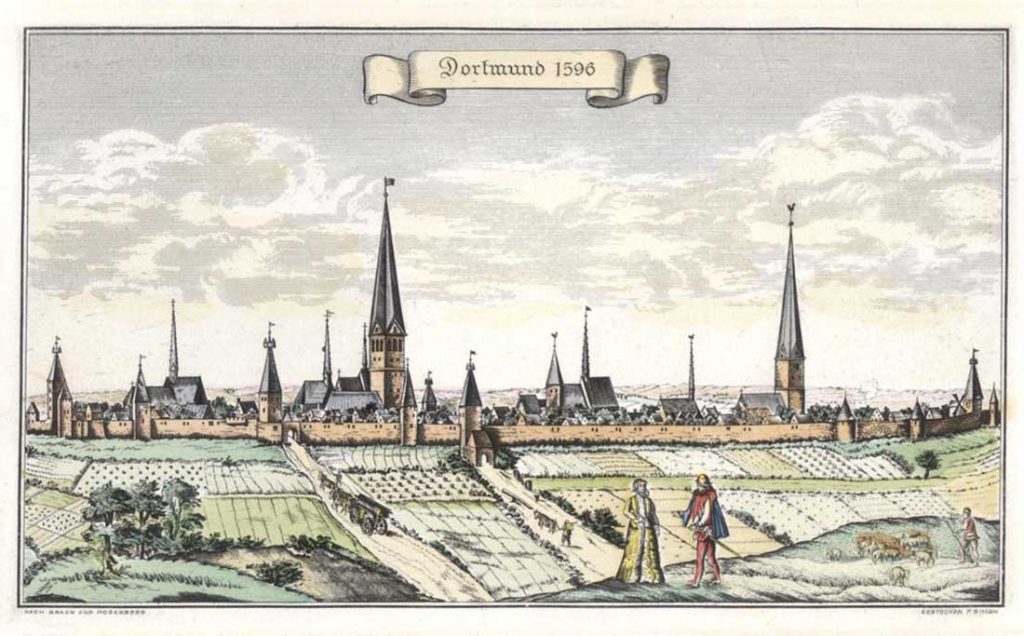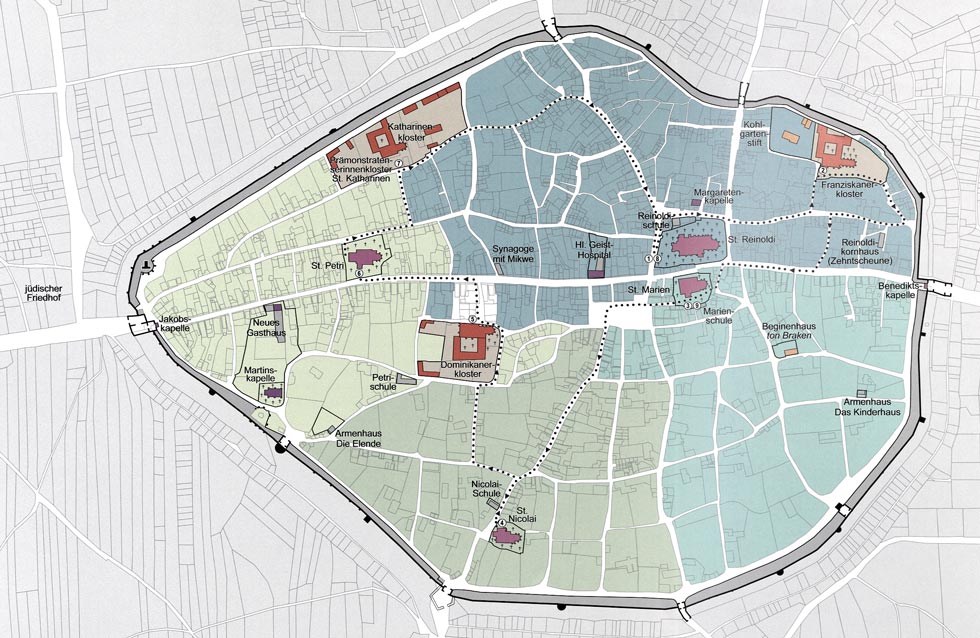The community in the Middle Ages
The “Free Imperial City” of Dortmund was the starting point for Jewish settlement in Westphalia. The oldest sources attesting the presence of individual Jews in Germany date back to the 11th century. Documents from the mid-13th century already indicate the existence of an initial organised community; these include an Imperial tax list dating from 1241, and a letter of protection (“Schutzbrief”) of 1250, issued by the archbishop of Cologne in favour of Dortmund’s Jews.
This medieval community was headed by a rabbi. It possessed a synagogue with mikveh, or ritual bath, on the road known as Westenhellweg, as well as a community house and cemetery outside the Western Gate (Westentor). The dwelling houses were also located on the western edge of the city centre.
In the wake of the plague outbreak of 1350, when the Jews found themselves widely accused by the Christian majority of “well poisoning” and hence of being to blame for the pandemic, all the Jews in Dortmund were expelled from the city.
20 years after their expulsion, the Jews were able to settle once more on the strength of letters of protection and safe conduct, and in the five decades between 1373 and the 1430s, the community in Dortmund came to be of outstanding importance for the Jews in Westphalia as a whole. The community had their synagogue returned to them, and were also able to use their old burial ground once more. As the Jewish cemetery was the only one in the south Westphalia region, Jews from elsewhere also found their last resting place there.
After 1430, the number of Jews living in Dortmund saw a constant decline, and the last Jew still living there finally left the city in around 1465. The following century was characterised by a constant alternation between admission and expulsion of the Jews, until they were finally driven out of the city in 1596 for a period of more than two hundred years.


